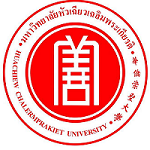Please use this identifier to cite or link to this item:
https://has.hcu.ac.th/jspui/handle/123456789/4066Full metadata record
| DC Field | Value | Language |
|---|---|---|
| dc.contributor.author | Mathuros Ornthai | - |
| dc.contributor.author | Atitaya Siripinyanond | - |
| dc.contributor.author | Bruce K. Gale | - |
| dc.contributor.author | มธุรส อ่อนไทย | - |
| dc.contributor.author | อทิตยา ศิริภิญญานนท์ | - |
| dc.contributor.other | Huachiew Chalermprakiet University. Faculty of Science and Technology | en |
| dc.contributor.other | Mahidol University. Faculty of Science | en |
| dc.contributor.other | University of Utah. Department of Mechanical Engineering | en |
| dc.date.accessioned | 2025-06-22T08:34:21Z | - |
| dc.date.available | 2025-06-22T08:34:21Z | - |
| dc.date.issued | 2016 | - |
| dc.identifier.citation | Anal. Chem. 2016, 88, 3, 1794–1803 | en |
| dc.identifier.uri | https://has.hcu.ac.th/jspui/handle/123456789/4066 | - |
| dc.description | สามารถเข้าถึงบทความฉบับเต็ม (Full text) ได้ที่: https://pubs.acs.org/doi/10.1021/acs.analchem.5b04082 | en |
| dc.description.abstract | A major limitation of electrical field-flow fractionation (ElFFF) is the polarization of the electrodes that occurs when using an ionic carrier liquid. As there is great interest in using ElFFF with biological materials and biological materials typically have high ionic strengths and high osmotic concentrations, we explore the effect of concentration for phosphate buffered saline (PBS), a typical ionic medium for biological samples, and for two nonionic materials common in bioparticle analysis: isopropanol (IPA) and sucrose. Their effect on retention and separations in ElFFF for increasing concentrations was observed. The results suggest that modifying the carrier solution with PBS, sucrose, and/or IPA would enable characterization and separation of biological samples in ElFFF. Specifically, changes of elution time and electrical parameters such as current, conductivity, and bulk channel resistance were observed as functions of carrier ionic and osmotic strength for the different carrier additives. PBS can be used in the micromolar range, equivalent to about 0.1% 1× PBS (150 μM). These concentrations are far from the isotonic condition of PBS (∼150 mM) that is normally used with biological samples. However, the nonionic additive carriers IPA and sucrose show quality retention even when added in high concentrations. The results show that IPA could be used in ratios up to 60% and that sucrose can be used in concentrations up to 0.3 M. Concentrations of 2% IPA (0.26 M) and 0.30 M sucrose are biologically isotonic conditions (275–299 mOsm/kg), and retention was readily obtained in these conditions using both DC ElFFF and cyclical ElFFF (CyE1FFF). Carriers of this type may make it possible to use ElFFF with biological samples. | en |
| dc.language.iso | en_US | en |
| dc.subject | Carbohydrates | en |
| dc.subject | คาร์โบไฮเดรต | en |
| dc.subject | Electrophoresis | en |
| dc.subject | อิเล็กโทรฟอรีซิส | en |
| dc.subject | Nanoparticles | en |
| dc.subject | อนุภาคนาโน | en |
| dc.subject | Polarization | en |
| dc.subject | โพลาไรเซชัน | en |
| dc.subject | Electric conductivity | en |
| dc.subject | การนำไฟฟ้า | en |
| dc.title | Effect of Ionic and Nonionic Carriers in Electrical Field-Flow Fractionation | en |
| dc.type | Article | en |
| Appears in Collections: | Science and Technology - Articles Journals | |
Files in This Item:
| File | Description | Size | Format | |
|---|---|---|---|---|
| Effect-of-Ionic-and-Nonionic-Carriers-in-Electrical-Field-Flow-Fractionation.pdf | 59.15 kB | Adobe PDF | View/Open |
Items in DSpace are protected by copyright, with all rights reserved, unless otherwise indicated.
